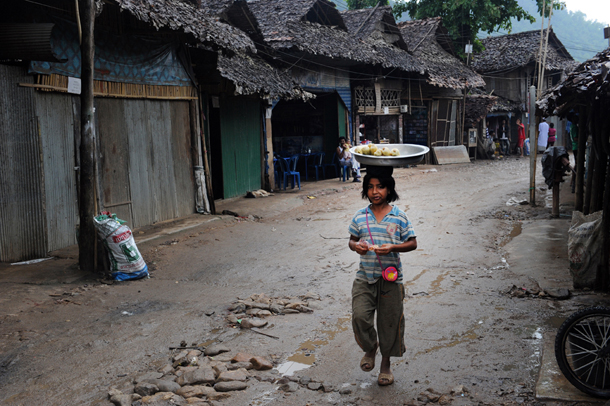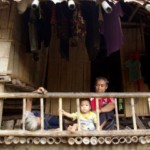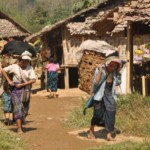By Saw Yan Naing / The Irrawaddy | June 17, 2016
RANGOON—The Thai government and nongovernmental organizations (NGOs) have repeatedly insisted that the return of more than 120,000 Burmese refugees from Thailand should be voluntary.
According to NGOs, some refugees have returned and others have shown interest in doing so, but there are unseen pressures prompting these so-called voluntary returns.
A reduction in aid and a denial for third country resettlement has placed pressure on refugees to leave the camps.
Many refugees in the nine camps along the Thai-Burma border lack sufficient assistance to support their daily lives. Some rely on small scale remittances and those who do not have a back-up return to their abandoned villages.
The UN High Commissioner for Refugees (UNHCR) reported in May that growing numbers of refugees in Thailand’s camps were encouraged by the peace process and reforms in Burma and were seeking support to return and rebuild their lives.
Sources in the camps said refugees were returning home if conditions appeared safe, but not because they were encouraged by the peace process. They added that lack of aid, denial of resettlement options and pressure from the Thai government were the actual motivating factors.
In preparation for refugee repatriation, houses are being built for internally displaced persons (IDPs) and refugees in Karen State, southeastern Burma. According to a report by Karen News, an ethnic Karen media outlet, a Japanese charity foundation called the Nippon Foundation funded the construction of more than 1,200 low-cost houses, seven schools, three clinics and one health center in Karen National Union (KNU) controlled territories in Mon State, Karen State and elsewhere.
In spite of ongoing preparations for repatriation, many of the refugees from these areas were displaced by conflict and said they did not want to return home because their villages and farmlands were still occupied by the Burma Army.
Burma’s government has been unclear on its policy regarding the return of disputed land—some of which is still littered with mines left from the conflict—to its original owners.
Model villages have been constructed, but many refugees said these were glorified domestic refugee camps and they preferred to return to their original lands where they could farm, raise livestock and run other small-scale businesses.
Aside from refugees displaced by conflict, there are economic migrants in the camps from urban areas, including the commercial capital Rangoon, who sought resettlement in the United States, Canada, Australia or the European Union. Refugees who were not displaced by conflict are unqualified to register with UNHCR and face no choice but to return home.
Recognizing the new democratic reforms in Burma, the Thai government appears unwilling to keep hosting the 120,000 refugees on its soil.
However, critics argue that unless there is a guarantee that war refugees can opt to live safely in their origin areas, the return is more of a forced repatriation than a voluntary one.
This article originally appeared on The Irrawaddy on June 17, 2016.



![‘The Burma Army Killed Him [Saw O Moo] – At Least the Government or the Army Should Commit to Not Do This Again’: Paul Sein Twa, Executive Director of KESAN](https://www.burmalink.org/wp-content/uploads/2018/05/Saw-O-Moo-commemoration-Paul-Sein-Twa-speaking-2-150x150.jpg)

![This Experience [of War] Will Never Disappear from My Mind: Lay Lit, Karen Refugee and Youth Leader](https://www.burmalink.org/wp-content/uploads/2017/09/LayLit2-150x150.jpg)

